2020 - Present
Currently, our annual production volume including domestic and global manufacturing bases exceeds 100,000 units. Since the start of integrated production of elevators and escalators, we have shipped more than 2million elevators and escalators to approximately 100 countries around the world.
In 2022, Mitsubishi Electric’s building systems business was reborn as a new company, Mitsubishi Electric Building Solutions Corporation, in order to establish a consistent business operation system encompassing everything from new installation of elevators and escalators to maintenance and renewal.
We will continue to create safe, secure, and comfortable building spaces for our customers through the development and manufacturing of elevators, escalators, and building systems, and the maintenance and renewal of air conditioning, cooling and heating, and other building equipment. We will contribute to smarter cities and help solve social issues.
2022"Mitsubishi Electric Building Solutions Corporation"
was established through taking over
the Mitsubishi Electric's building systems business on April 1st., 2022.
Mitsubishi Electric
Building Techno-Services
Mitsubishi Electric's
Building Systems Business
2021
Started marketing the standardized passenger elevator, the NEXIEZ-MRL Version2, for overseas.
2020
Cumulative production reached 500,000 units (Inazawa Building Systems Works). Cumulative production reached 1 million units (Shanghai Mitsubishi Elevator Co., Ltd.).
2010 - 2019
In 2016, following Yokohama Landmark Tower, we set another new world speed record (at the time) of 1230m/min at Shanghai Central Tower, the tallest building in China. In 2019, the Inazawa Installation Training Center “Takumi” began operations to respond to the increasing number of engineers both inside and outside Japan, and to improve their skills in line with the growing scale of the global elevator market. In addition to enhancing more practical and effective training using actual equipment and VR equipment, we have expanded the educational system for training instructors overseas.
2019
Started to provide global remote-maintenance service, M’s BRIDGE™, for Elevators.
Launched a function enabling operation of an elevator with a smart phone.

2011
Established MELTEC PARTS & ENGINEERING CO., LTD., a maintenance parts distributor in Thailand for global market.
2019
Opened the Inazawa Installation Training Center ‘Takumi’
Mitsubishi Electric, which provides world-class high-speed elevators and spiral escalators, installs elevators using outstanding skills, to deliver peace of mind to users. Because the installation of elevators and escalators requires many years of experience and accumulated technology, the installation training facility was named "Takumi" in the hope of fostering and turning out many future "elevator craftsmen".

2016
Delivered the world's fastest passenger elevator at the time: 1230m/min (Shanghai Tower, China).
2010
Started marketing the standardized passenger elevator, the NEXIEZ, for overseas.
2000 - 2009
In the 2000s, we developed the world's first biometric authentication device, the Fingerprint Authentication Devices. In 2007, we completed construction of the elevator test tower, named SOLAÉ, to respond to the world's skyscraper era.
2007
Started sales of elevator and escalator parts for overseas.
2002
Opened an interactive showroom, M's station.
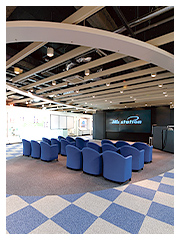
2007
Built a testing tower "SOLAÉ" at Inazawa Works (current Inazawa Building Systems Works) (Height: 173.0m)
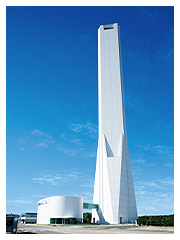
2002
Established Mitsubishi Electric Shanghai Electric Elevator Co., Ltd., a manufacturing joint venture in China for Chinese domestic market.
1990 - 1999
Following Sunshine 60, we renewed our record for the world’s fastest elevator speed (at the time) with the 750m/min elevators at Yokohama Landmark Tower. In addition, we developed a machine room-less elevator that eliminates the need for a conventional machine room and enables free architectural design.
1996
Started to provide the remote checking system for elevators, escalators and air conditioners.
1990
Changed the company name to "Mitsubishi Electric Building Techno-Service Co., Ltd."
1998
Started marketing a machine-room-less elevator, the ELEPAQ series in Japan.
1993
Delivered the world's fastest passenger elevator at the time: 750m/min (Yokohama Landmark Tower, Japan).
In July 1993, Mitsubishi Electric developed a passenger elevator, the world's fastest at the time with speeds of 750m/min, installing two elevators in one of Japan's tallest skyscraper complexes, the Yokohama Landmark Tower (70 stories, 296m high). This speed allows the elevator to comfortably and safely reach the 69th floor (observation floor) in approximately 40 seconds. The elevators were developed with new safety device technologies, such as emergency stops using special ceramic shoes and drive control devices such as large parallel drive inverters and large AC gearless hoists for ultra-high-speeds. In addition to these technologies, the company achieved the world's fastest elevator speeds while maintaining safety and comfort by attaching a streamlined air cover to the upper and lower parts of the car, as well as by performing computer simulations and all sorts of experiments, in order to reduce the vibration and noise that comes with higher speeds.
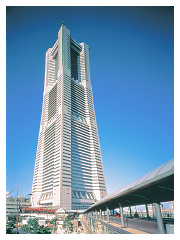
1991
Established Mitsubishi Elevator Asia Co., Ltd., a manufacturing company in Thailand for global market.
1980 - 1989
We successively delivered several world’s-first products, such as our “spiral escalator” that changed the concept of escalators, and the “zigzag elevator”. In 1988, we delivered the first overseas spiral escalator to the United States.
1988
Started building diagnosis operations.
1984
Started the installation service of new elevators and escalators.
1983
Started the remote monitoring service of building equipment.
In 1982, Mitsubishi Electric Building Techno-Services launched the MELSENTRY-S with a 24-hour remote monitoring service that enables quick response when the building manager is away, through automatic notifications over telephone lines. Following on from the MELSENTRY-S, the MELSENTRY-U 200/400 Models were released for larger buildings. It integrates in-building equipment such as elevators and air conditioners with security and disaster prevention signals, and has a central monitoring and a remote monitoring function for monitoring, control, and measurement. In 1986, the MELSENTRY-U 100, targeting for the most demanded small and medium-sized buildings, was released. It incorporates a compact and economical central monitoring function, as well as a remote monitoring service to meet the market needs of unmanned building management, and automatic billing for tenants' electricity bills, etc. This product was the pioneer of product-service collaboration.
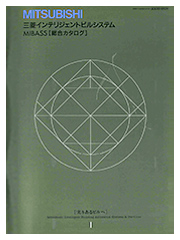
1981
Started the remote monitoring service of elevators and escalators.
1986
Established Shanghai Mitsubishi Elevator Co., Ltd., a manufacturing and sales joint venture in China for Chinese domestic market.
1985
Delivered the world's first practical curved escalator, SPIRAL ESCALATOR®.
In March 1985, Mitsubishi Electric changed the very concept of escalators moving in a straight line, and the world's first escalator that goes up and down along a spiral curve, Mitsubishi Spiral Escalator was delivered in 2 units to the Tsukuba Creo Square Shopping Center in Japan. The spiral escalator is formed by bending a conventional straight escalator in an arc shape in order to respond to the demands of diversified building designs, and passengers can enjoy a wide-angle view inside the building as they move. So as to keep the step in a horizontal position as it moves in a spiral direction, the company developed a mechanism that changes the center of rotation of the step according to its incline angle. This combined with three-dimensional curved surface processing technology has enabled the spiral escalator to become a reality, and it has been adopted in Japan and overseas since then.
1970 - 1979
We delivered Japan's first double deck elevator and the world's fastest elevator. The elevators used in the Sunshine 60 building employed many new technologies, achieving the world's fastest speed (at the time) of 600m/min.
1977
Established the Tokyo Elevators and Escalators Service Center.
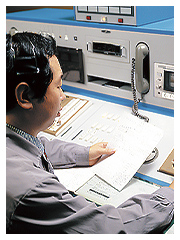
1978
Delivered the world's fastest passenger elevator at the time: 600m/min (Sunshine 60 Building, Tokyo, Japan).
In April 1978, Mitsubishi Electric supplied two elevators, the world's fastest at 600m/min and Japan's longest at 227m on completion, to the Sunshine 60 in Ikebukuro, Tokyo. With a planned observatory on the top floor (60th floor) and restaurant on the 59th, the elevators enable people to get to these floors quickly. And, befitting the tallest elevator in Japan, the elevators have a top speed of 600m/min, outpacing the world's fastest at the time of 540m/min. In addition to the high-performance speed control device developed with the company's elevator technologies built up over the years, various new technologies were used in the elevators, such as a sound-absorbing car with streamlined capsule as well as a highly reliable safety device, helping to give the speeds of up to 600m/min.

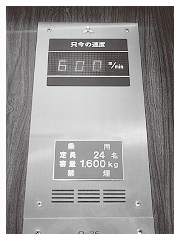

1950 - 1969
In 1954, we also launched elevator maintenance and repair services, and in 1956, we started repair and parts sales services for air conditioners. In 1958, we exported our first elevator to Hong Kong, and in the same year we started maintenance of the observatory elevator at Tokyo Tower. In 1964, Inazawa Works was established as a factory specializing in elevators and escalators.
1965
Established the Training Center.


1956
Started repair work of air conditioners and sales of parts.
1954
Established Ryoden Services Co., Ltd.
Started maintenance and repair work of elevators and escalators.
1964
Established Inazawa Works (current Inazawa Building Systems Works).
In 1964, in response to increased demand for building construction during the period of rapid economic growth, Inazawa Works was established as a factory specializing in elevators and escalators. As the world's mother factory that delivers originality and high quality, it continues to introduce various products to the world that suit the times.

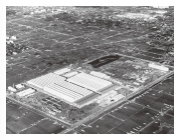

1961
Started marketing the standardized elevator, the ELEPET.
With entry into the Hong Kong market, Mitsubishi Electric's elevators, developed on Westinghouse's advanced elevator technology, had to develop into a product that could compete with the small, lightweight, functional products of Western European manufacturers. In Japan as well, the need for small, widely-available elevators increased with the rise in small and medium-sized buildings. To meet the needs, Mitsubishi Electric worked hard to standardize and streamline elevator design and construction. In 1961, the company succeeded in developing its landmark passenger elevator, the ELEPET, with a standardized specification and design. The ELEPET was Japan's first standard type elevator with a capacity of 6 to 11 passengers and a speed of 30 to 60m/min, and 17 models with standardized door types and designs. Since it was first launched, the ELEPET gained tremendous popularity, becoming a representative of elevators of the time.
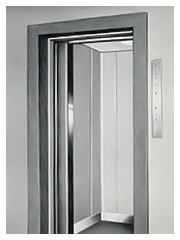
1958
Started maintenance of the elevators used for observation at the Tokyo Tower.
Mitsubishi Electric delivered 3 outdoor-type observation elevators going up to the observation deck (now the Main Deck) 125m above ground level at the Tokyo Tower (Japan Radio Tower), which surpassed the Eiffel Tower to become the world's tallest building at that time. The elevators had a larger capacity (up to 30 passengers), faster speed (120m/min), and greater height (125m) than any other elevator installed in TV towers. As well as these elevators, Mitsubishi Electric supplied one antenna maintenance elevator connecting the observation deck with the floor 223m above the ground, which is used as a workstation for antenna maintenance, and two elevators for the modern science museum located in the base of the tower. In line with the large-scale refurbishment of the Top Deck that was carried out for Tokyo Tower's 60th anniversary in December 2018, the antenna maintenance elevator was revamped into an observation elevator connecting the Main Deck and Top Deck, with the Top Deck grand opening taking place in March 2018.
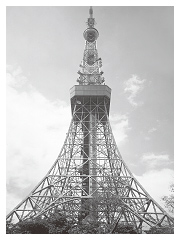
1950
Exported the first elevators abroad.
1920 - 1949
Since its founding in 1921, the Mitsubishi Electric Group has forged a 100-year history of continuously making innovative changes in its drive for ever-better manufacturing. The history of Mitsubishi Electric’s elevator manufacturing dates back to the prewar period, beginning with the delivery of our first elevator in 1935. Since then, for more than half a century, we have been a leader in elevators and escalators in Japan and the world, with the most advanced technology of the times.
1937
Built a factory for manufacturing elevators and escalators at Nagoya Works and completed the tallest and largest testing tower in Asia (at the time).
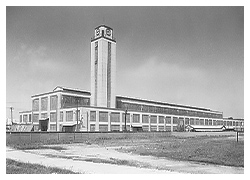
1935
Delivered the first elevator and escalator.

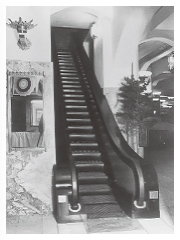
1931
Started manufacturing elevators and escalators.
1923
Technological licensing agreement signed with Westinghouse Electric
When Mitsubishi Electric was first established in 1921 the technological processes required to catch-up with other manufacturing companies and create high-quality products were significant. Throughout the entire manufacturing process from material selection and development, to production manufacturing technology and costing systems, it was clear that significant improvements were required. In order to meet the technological advancements that had already been achieved by other domestic manufacturers of electrical equipment, Mitsubishi Electric sought technological tie-ups with overseas manufacturers in the UK and USA. Following lengthy negotiations and a mutual understanding of each company's corporate style, a technological licensing agreement was signed with Westinghouse Electric on November 20, 1923. Following initial technical and R&D cooperation, in 1925 the first apprentice employee was assigned to Westinghouse, along with a technician, an engineer and an office clerk. This established the expatriate system which would persist through the ups and downs of the relationship and lead to the independent evolution of Mitsubishi Electric, and the foundations of how the company operates today.
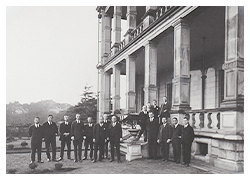
1921
Established Mitsubishi Electric Corporation.




